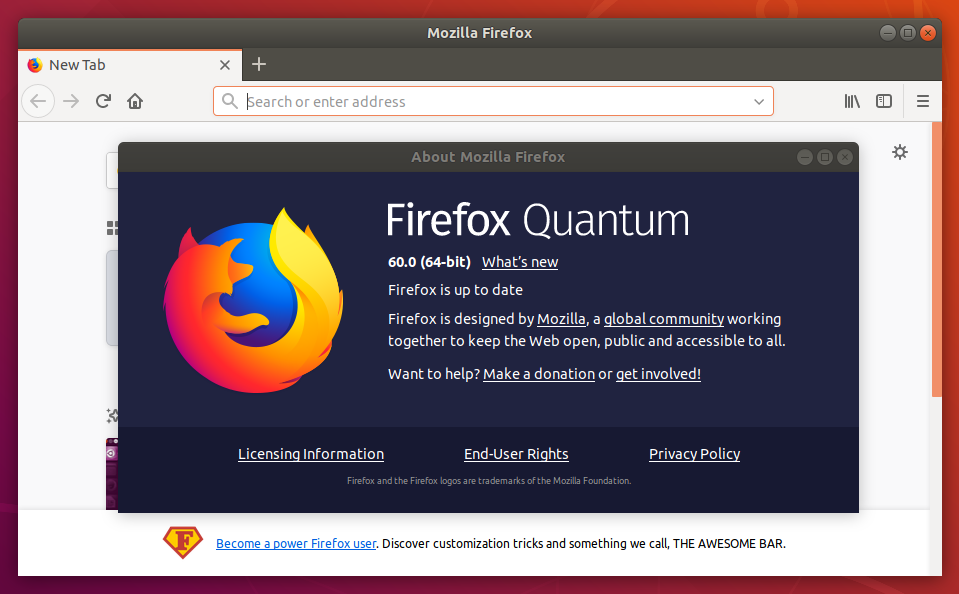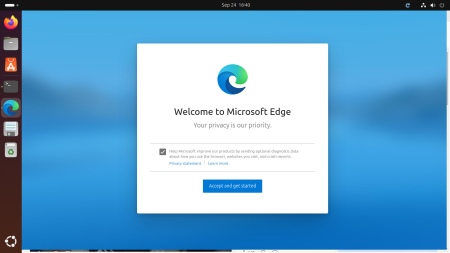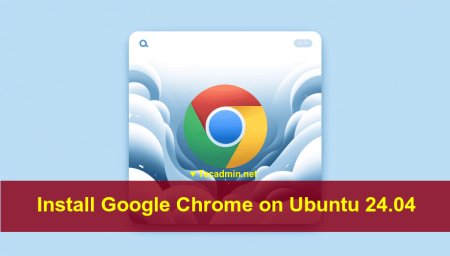Firefox stands out as a widely-used web browser, celebrated for its swift performance, robust security, and commitment to user privacy. In this guide, we’ll demonstrate how to acquire and set up the most recent version of Firefox using a zip file for Fedora or CentOS systems.
This guide provides instructions on how to seamlessly install Firefox on CentOS, RedHat, and Fedora Linux distributions. We’ll be focusing on the latest Firefox pre-built version for Linux. With this version, there’s no need for further compilation—just unzip the file and you’re all set to browse.
Useful links:-
Step 1: Remove Previous Versions
Several Linux versions come with Firefox pre-installed. It’s advised to purge any older version from your system. Use the command below to clear the pre-installed Firefox on RedHat-based Linux systems:
sudo dnf remove firefox
Furthermore, if you have a pre-existing Firefox binary, consider unlinking or renaming it. For instance, if it’s located at `/usr/bin/firefox`.
unlink /usr/bin/firefox## Or rename file mv /usr/bin/firefox /usr/bin/firefox_bak
Step 2: Download Latest Firefox for Linux
Head over to the Firefox download page and pick the “Linux 64-bit” option under the “Desktop” category. Afterward, click “Download Now” to grab the zip file.
For terminal enthusiasts, here’s a command to directly download the newest version of Firefox source code for Linux 64 bit systems:
cd ~/Downloadswget -O firefox-latest.tar.bz2 "https://download.mozilla.org/?product=firefox-latest&os=linux64&lang=en-US"
Post-download, launch a terminal and shift to the folder where the file lies. If it’s in the “Downloads” folder, punch in:
tar xvjf firefox-latest.tar.bz2 -C /usr/local
This spills all the files into the `/usr/local/firefox` directory.
Step 3: Install Firefox on Linux
The beauty of Firefox source code is its pre-compilation, so no additional fuss to get it working. By “installing”, we mean tailoring Firefox for your system. A soft link of the Firefox binary file to the system’s bin directory is all you need to make it universally accessible.
sudo ln -s /usr/local/firefox/firefox /usr/bin/firefox
Kick off Firefox with the following command, or simply pick it from your GUI menu:
firefox &
Conclusion
This guide has provided detailed instructions on downloading and installing the most recent version of Firefox using a zip file across CentOS, RHEL, and Fedora systems. We sincerely hope that the information shared enhances your browsing experience with Firefox, ensuring you enjoy the latest features and security updates. By following the steps outlined, you can keep your browser up-to-date, optimizing your internet navigation and safeguarding your online presence.





50 Comments
Your post was very helpful. Thank you.
Hello i am new user and i would to ask you, How to disable a pm?
Thanks, but what about some authentication check for the downloaded file?
Thanks for the guide. Can firefox auto update if we follow above method ?
Thank you Rahul. It helped me very much.
Are you a leader or a follower?
thank you for sharing knowledge
Hello everyone! I had the same problem with libgtk3.so missing on CentOS 6.8, but googlin’ it I found <a href=this:https://browsertechnicalsupportnumbers.com/blog/fix-mozilla-firefox-can't-connect-server-internet/.It´s means that since firefox version 42, It´s no longer compatible with CentOS 6.
The easier option is to install firefox 41. Change every step on this tutorial on this version and it will works!
I hope it will be helpful for you.
Or, using el7, you could just ‘sudo yum -y install gtk3-devel’ to get the missing dependancy?
Info 2 – The CentOS/RedHat 6 only supports Firefox 41….
the info is useful… Firefox 67 has gtk lib’s issues on Centos 6
Hello, admin.
Interesting website, really!
But “Search” function on it doesnt work. Sad.
P.S. Where I can get XEvil4.0 for free?
It’s best captcha solver, included Google ReCaptcha.
Need it for white SEO. Thanks.
For those interested enough, here is my repo with some installation scripts that I wrote for Debian/Ubuntu: https://github.com/sid-the-sloth/install-scripts
Check it out!
I am running RHEL 5.10 trying to install firefox. After installation, when I type the command “firefox &”, Im getting an error hat GLIBCXX NOT FOUND. Please help.
[root@cad9 local]# sudo ln -s /usr/local/firefox/firefox /usr/bin/firefox
[root@cad9 local]# firefox &
[1] 6651
[root@cad9 local]# firefox: /usr/lib64/libstdc++.so.6: version `GLIBCXX_3.4.10′ not found (required by firefox)
firefox: /usr/lib64/libstdc++.so.6: version `GLIBCXX_3.4.9′ not found (required by firefox)
firefox: /usr/lib64/libstdc++.so.6: version `GLIBCXX_3.4.11′ not found (required by firefox)
[root@cad9 local]#
Bro, Could you solve your problem? i have the same trouble
Hello everyone! I had the same problem with libgtk3.so missing on CentOS 6.8, but googlin’ it I found this:
https://www.centos.org/forums/viewtopic.php?t=57708
It´s means that since firefox version 42, It´s no longer compatible with CentOS 6.
The more easier option is to install firefox 41. Change every steps on this tutorial on this version and it will works!
Kind regards.
Can you write new article for install nightly firefox in centos?
I need tutorial for it..
Config: Centos 7 with kernel 4 version
I downloaded FF 57 with my old version 52 it goes into your Downloads dir.
Yum remove old version see above instruction
Remove .mozilla directory in your home directory
TAR it see above instruction
Move the FF 57 folder to /usr/local
LN -s as per above instruction
It should work Good luck
Working fine for me.Thnx
Hi,
getting error: any advice?
XPCOMGlueLoad error for file /usr/local/firefox/libmozgtk.so
Couldn’t load XPCOM.
Linux
hi I got this message: what does it mean and what do I do about it?
ln: failed to create symbolic link ‘/usr/bin/firefox’: file exists.
What do I do now?
Try purging rather than just removing existing firefox so it takes the conf with it. If that doesn’t do it, manually rm the file.
Did step 2. Just returned “Permission denied”. According to synaptic package manager I’ve gor FF files. According to everything else, “No such file or directory”. Have just spent days getting LM Rosa 17.3 64bit back from the dead (37 broken packages repaired – eventually) and now have no browser or web access. HELP!!!!1
Sorted! Managed to resolve in Synaptic Package Manager. Had to go through language pack by language pack though (probably cocked summat else up knowing me!) deleting extraneous (to me) languages. All tickedy-boo now. Yippee ?
I am getting below issues when launching firefox :
XPCOMGlueLoad error for file /usr/lib/firefox35/libxul.so:
libgio-2.0.so.0: cannot open shared object file: No such file or directory
Couldn’t load XPCOM.
Cool. worked perfectly
Hi, Rahul i just installed centos basic server and followed your steps it didn’t work for me….
first i got this
[root@localhost local]# -bash: /usr/bin/firefox: cannot execute binary file
cd /
[1]+ Exit 126 firefox (wd: /usr/local)
(wd now: /)
then i tried from /#
[root@localhost /]# -bash: /usr/bin/firefox: cannot execute binary file
[1]+ Exit 126 firefox
can u please help me….
thanks a lot.
I do not recommend yum remove firefox
just
[code]rm -f usr/bin/firefox
ln -s /usr/local/firefox/firefox /usr/bin/firefox[/code]
centos 6 64 bit update compatibility module flash and freshplayerplugin work enter command
[code]sudo cp /usr/lib/mozilla/plugins/* /usr/lib64/mozilla/plugins
sudo rm -rf /usr/lib/mozilla/plugins
sudo ln -s /usr/lib64/mozilla/plugins sudo rm -rf /usr/lib/mozilla/plugins[/code]
Thanks Kimpe
As for x64 compatibility module flash,the commands didn’t work for me, I had to copy from lib64/mozilla/plugins to lib/mozilla/plugins not the other way
Thanks for the instructions. it is working.
Nice blog, its working 🙂
Save my day……
Hi, Is it possible to update firefox on edbuntu live edition..?
It went every thing well.
At last it gave can’t create link bcaz already exists.
I always see: Permission denied, and I ca’nt figure out what to do, I can’t even copy any file to usr/local
please help, I like CentOS
use the ‘sudo’ command before that step as such;
sudo tar xvjf firefox-44.0.tar.bz2
Hi
I would like to know on Centos 7 , with gnome gui installed, is this Firefox install will just replace the current Firefox Or it will install in a separate location ?
Thanks
when using Firefox 31 with CentOS 7 it can’t see flash player even it’s installed in my machine. any ideas ?
Will this installation destroy the current version of FF, if say you change it a little and write:
ln -s /usr/local/firefox/firefox /usr/bin/farefox
Say is this version compatible with a 2006 ACER 5003WLMi 64 bit Turion running 2008-4 Ubuntu Lucid Lynx? Or what should I try to get- where’s the stable FF repository that still works? And Skype. Thanks.
I have some error message here. How can I fix this problem? Thank you!
XPCOMGlueLoad error for file /usr/local/firefox/libxul.so:
libgio-2.0.so.0: cannot open shared object file: No such file or directory
Couldn’t load XPCOM.
This did not work for me?
Hi Em,
What issue are you facing ?
ubuntu@ubuntu ~/Downloads $ tar xvjf firefox-42.0.tar.bz2
tar (child): firefox-43.0b6.tar.bz2: Cannot open: No such file or directory
tar (child): Error is not recoverable: exiting now
tar: Child returned status 2
tar: Error is not recoverable: exiting now
why happen this??
Hi Manm,
You issue will be resolve using below commands:
# bunzip2 firefox-42.0.tar.bz2
# tar xvf firefox-42.0.tar
Must install xulrunner 31 first before you install firefox 31, or wise the hwol thing makefucntions
Hi.. Rahul, in my linux (rhel 5.7 32bit i686 ) have alredy firefox 3.0 but i need lastest version how can i do please tell me i tried this article also but nothing new in my firefox
i tried other rpm also but dependency problem can u please tell me steps please
hi nice i installed and user for excuting command it showing error like error: no display specified please help me ..beacuse im using centos 6 in only cli mode
Hi Dinesh,
You can’t use Firefox in CLI mode. For CLI mode you may use elinks command.
i install jira in centos cli system..now acces in my laptop in googlechrome…i start the jira setup step 1 is choose the internal databse or external databse ,,, i accidently choosen internal dabase ..now im in setp 2 application properties i want get back step 1 help me how there is no option to going back to setp 1
nice tutorial on neat blog. thanks
but how to install flash player?
I need to update firefox 28 to 29 on ubuntu 12.10